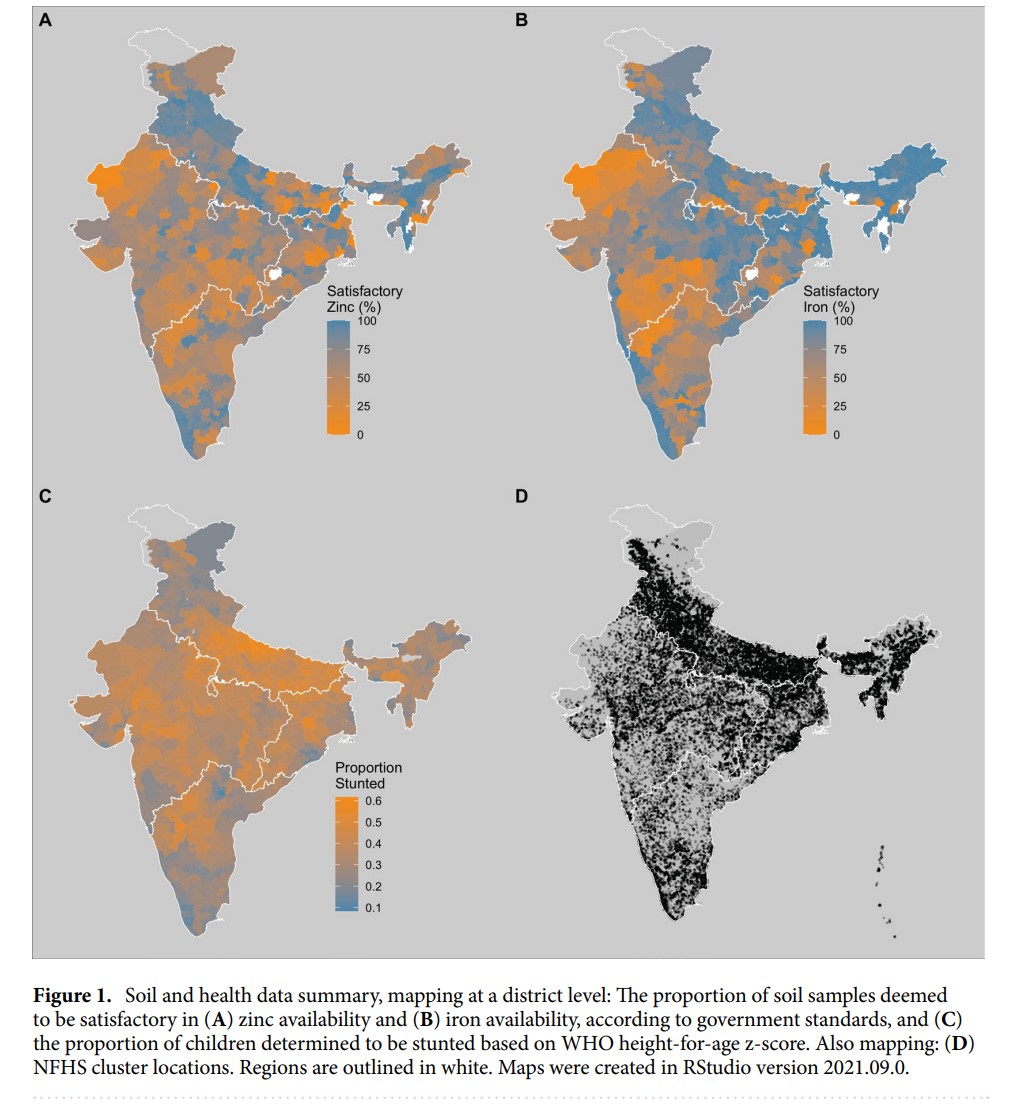Micronutrient deficiency is known to affect the health of over two billion people globally and is known to impact learning, IQ, motor skills, and immune system functions and has a lasting effect on children through adulthood.
For example, zinc deficiency has caused around 116,000 deaths in children under five years globally in 2011 and 175 million more people may become zinc deficient by 2050 due to globally rising CO2 levels informs this paper titled 'Soil micronutrients linked to human health in India' published in Nature, Scientific Reports.
A large number of people could face the risk of mineral deficiencies due to eating foods based on cereals, legumes and vegetables grown on soils that are low in mineral concentrations. Many countries use fortification i.e. enriching fertilisers or irrigation water with trace minerals such as selenium, iodine, and zinc to raise crop mineral concentration and human mineral intake.
There are no large-scale studies that examine the association between children’s nutritional status or health outcomes and soil mineral availability in India, although India has roughly one-third of the global population suffering from micronutrient deficiency.
The rate of child stunting in India is about 35 percent and malnutrition is an important risk factor for loss of Disability-Adjusted Life-Years in children causing an estimated 0.5 percent of all deaths in India. Almost 138 million people in the country live in rural areas, many of them being farmers who own small amounts of land and rely on their own production for food, particularly for staple cereals. As high as 35 percent of soils in India are deficient in zinc, and 11 percent in iron.
This study evaluates the relationship between health outcomes and soil mineral availability in India, namely soil zinc availability and child stunting or women’s height and soil iron availability on the haemoglobin levels in women and children. The study links health data from nearly 0.3 million children and one million adult women across India with over 27 million soil tests drawn from a nationwide soil health program.

The study finds that:
- Soil mineral availability can have a causal impact on the nutritional status of women and children in India.
- There is a strong relationship between soil zinc availability and nutritional outcomes of children and adult women in India. Districts with an increased proportion of satisfactory soil zinc samples have significantly lower rates of child stunting and underweight. Soil zinc availability is also associated with an increase in the height of women.
- Soil iron availability can affect hemoglobin levels among children and women. The association between soil iron and hemoglobin can be very important from a public health perspective as India has one of the highest prevalence of anemia among women at around 53.1 percent and 58.5 percent among under five children.
- Low soil zinc availability is associated with childhood stunting and the effect appears to be strongest in wealthier households, perhaps reflecting the fact that children from poorer households face many more health constraints beyond zinc status that contribute to their stunting.
The paper ends by arguing that soil mineral availability seems to impact human nutritional status and health in at least some areas of India. Thus, agronomic fortification may be a beneficial intervention under these circumstances.
The paper can be accessed here













